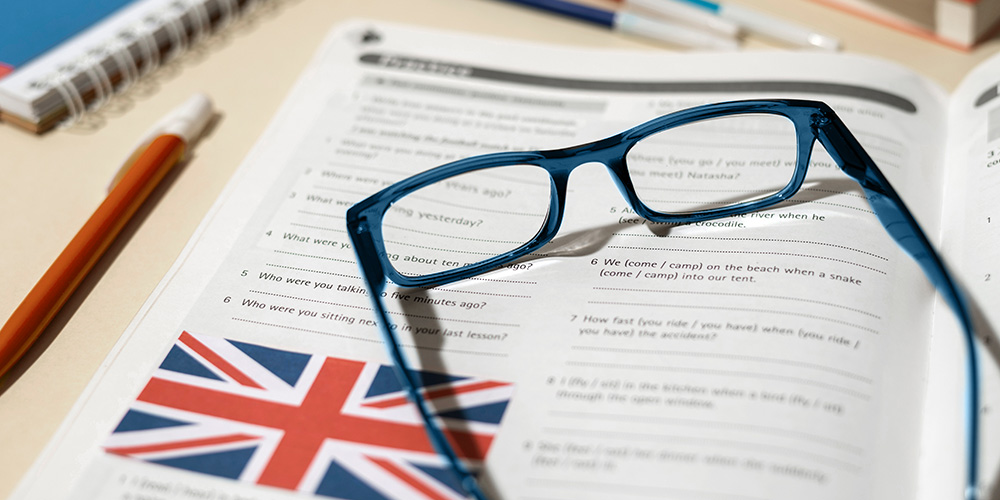
IELTS is a universally accepted English Language Proficiency test that assesses the language ability of non-native speakers. If you want to know "What Is IELTS?" this post is for you. In this article, Radviser, your intelligent adviser, will look at the IELTS exam format, the skills it assesses, and how the scores are used. Once you have learned all about IELTS and its specific purpose, you can be much more prepared to take and pass the exam.
What Is IELTS?
International English Language Testing System Examination, known as IELTS, is used to assess students' English language proficiency looking to study higher education courses held in English at different universities and colleges or who wish to apply for a new career path overseas. Many educational organizations or companies want to ensure that a candidate has completed an IELTS examination and has achieved minimum scores before being offered a place in a course or a position in a company.
This will prove that the candidates will not have difficulty learning and working in English because their language skills are above average. IELTS is the most popular English language proficiency exam for higher education and global immigration. The IELTS results are recognized and accepted by more than 10,000 organizations, consisting of professional associations, employers, educational institutions, and governments in over 140 countries worldwide. IELTS is also accepted by most Canadian, European, Irish, British, New Zealand, and Australian institutions, and over 3,000 organizations in the United States.
IELTS is co-owned by the British Council, IDP: IELTS Australia, and Cambridge Assessment English. The British Council is an international organization connecting people with new opportunities and building relationships between the UK and other countries. IDP: IELTS Australia is one of the most known international educational organizations offering placement in Australia, Canada, New Zealand, the USA, and the UK. The Cambridge Assessment English is part of the University of Cambridge, providing qualifications for learners and teachers of the English language across the world.

Why is IELTS Important?
Besides knowing "What Is IELTS?" you must understand why it is important. IELTS is necessary if one wants to immigrate, pursue an academic purpose, or work abroad in English-speaking countries. It is the only English Language Test accepted by UK Visas and Immigration for visa applicants both inside and outside the UK. The IELTS scores will assure the authorities that the candidates will not have cultural and communication issues while working/studying in the country. That is why the overall IELTS score is so important. It is good to know that IELTS is not a compulsory exam, but not giving it will lower the candidate's chances of getting a student visa. For that, it is safer to achieve at least 6 bands overall. The IELTS exams are scheduled for about 48 days per year, and a candidate can take the test 4 times a month.
Who Can Register For IELTS?
Anyone willing to get higher studies from abroad or those looking for a better career path in different English-speaking countries can register for IELTS. If you are planning to study in the UK/Australia/New Zealand/Canada/USA, a professional willing to work in the UK/Australia/New Zealand/Canada/USA, or planning to immigrate and live in the UK/Australia/New Zealand/Canada/USA, IELTS is a necessity.
The version of the IELTS exam differs based on the purpose of the attempt. To apply for an academic program IELTS Academic and work-related training or immigration IELTS General Training is needed. Remember that you must check the version required by the institution or organization you apply to and plan the test accordingly.
IELTS Eligibility
To take the IELTS exam, the candidate should be at least 16 years old. They must have a valid passport. It is available for anyone irrespective of gender, race, nationality, and religion.
There are no minimum educational eligibility criteria for the IELTS test. Anyone willing to study, live, or work abroad can take the IELTS exam in Academic and General Training versions. However, the best thing to do is to check the target educational institution or the organization's eligibility and minimum band score for the test.
IELTS Registration
The IELTS application can be submitted in both offline and online modes. Candidates who want to register offline must download the IELTS application. Note that it is better to plan IELTS after considering the admission period.
Find the nearest IELTS exam center, then register and pay the fee online, or download the IELTS application form to print, fill out, and send to the nearest local test center. You need to read the IELTS registration portal on the official website. Select the country to find the closest test center. Then click on the registration link. You must present a valid photo ID, which will be acquired on the test day. Then, you must create an account and select "register for the test." After that, you must choose the preferred test types: computer-delivered IELTS or paper-based IELTS.
Select your ideal test date and choose the test slot from the available options. Find the application form and complete the registration form. Upload a vivid scanned copy of your passport and submit the required details. Pay the fees, and the test is booked.
Once these steps are passed, you will receive an acknowledgment of the registered contact information that confirms the center, date, and time of the IELTS test. Most of the time, the speaking and writing tests occur on the same day; if not, the test will be done within seven days. If you forgot to select any slot, the conducting body would allot one automatically.
Required Documents for IELTS Registration
The essential identification document accepted for the IELTS exam is your valid passport or national identity card. It is necessary to verify your identity at the IELTS test site. This is mandatory for the entire exam and registration. The identification documents submitted during the exam must match the ones submitted when applying for the exam. Without a valid photo ID, there is no way to be admitted to the examination center.
There are some other required items at the exam center, including:
- Two new identical photos of you (you need these photos if the uploaded image to the registration forms is not clear.)
- Print of the confirmation email received from the British Council after registration for the IELTS test.
Please note that cell phones and other electronic devices are not allowed in the examination room.
IELTS Fees
There is no fixed price for taking the IELTS test because it differs in each country. The prices are always the same for the Academic and General Training tests.
- If the IELTS exam is canceled more than 5 weeks before the exact date, you will receive minus 25% of the administrative fee.
- If you cancel your IELTS exam less than 5 weeks ahead of the exact date, you will not receive a refund.
- If you fail to attend the IELTS exam, you will not receive any refund. However, with a proper medical certificate within five days, you can receive a refund after deducting the administrative cost.
- To change the IELTS exam date, you can request at least 5 weeks before the test date. You must pay for the postponement or cancellation fee. The new exam date must be within 3 months of the canceled test date.
- There is an option that allows you to ask for an inquiry on results if you think your results are incorrect. This request must be made within 6 weeks of the exam date. You should pay a small fee, and the result will be rechecked. If your results were wrong, you would receive the full amount of the fee.

IELTS Exam Types
There are two modules of the IELTS test, i.e., IELTS Academic and IELTS General Training. The type of test you choose should be based on your purpose and requirements.
Both exams consist of four sections, listening, speaking, writing, and reading. The listening and speaking sections are the same for both tests, and the subject matter for the writing and reading sections is different based on the test type. The writing, reading, and listening sections of both IELTS tests are completed on the same day with no breaks between them. The speaking section can be completed a week before or after the test date. All the needed information about these tests is available on your test center website. The total test time is about 2 hours and 45 minutes.
1. IELTS Academic
The IELTS Academic measures the level of English language proficiency for an academic situation. It evaluates whether a candidate is ready to begin training or studying in an English-speaking country. The IELTS Academic module is perfect for those trying to complete higher education or professional registration abroad.
2. IELTS General Training
The IELTS General Training measures English language proficiency in a practical daily life context. This test consists of tasks based on workplace and social situations communication. It is mainly used by those who wish to immigrate to English-speaking countries. Those who want to apply for training programs, further education, or accomplish work experience in a country where English is fundamental for communication also take the test.
IELTS Format
As mentioned earlier, the International English Language Testing System or IELTS has two formats, i.e., IELTS Academic and IELTS General Training. A candidate can opt for either one depending on the destination company, college, or university requirements. Both formats include four sections, reading, listening, writing, and speaking.
The reading section includes 3 long passages with different tasks. The passages can be descriptive, factual, analytical, and discursive. They can contain diagrams, graphs, and illustration texts. There will be 40 questions answered in 60 minutes.
Generally, the listening section has 4 recorded monologues and conversations and 40 questions answered in 30 minutes.
In the writing section, the candidates must describe, explain, or discuss a table, graph, chart, or diagram in at least 150 words, or work on a short essay task of at least 250 words. There will be 2 tasks within 60 minutes.
For the IELTS test's speaking section, the candidate should be ready for a face-to-face interview, including 3 types of questions – short questions, speaking at length on familiar topics, and a formal structured discussion within 11-14 minutes.
So far, you know what IELTS is and why it is important. Let us explore some detailed information about each section of the test.
1. IELTS Reading Section
The reading section includes 3 tasks based on issues that are familiar to candidates. There will be 40 questions in multiple-choice, summary completion, identifying data, matching, short answers, and identifying the opinion, attitude, or intent of a writer.
IELTS Academic Reading
The academic format has 3 long paragraphs that are excerpts from journals, books, and magazines.
IELTS General Training Reading
The general training test includes passages from advertisements, company guidelines, and so on. It can be considered easier than the academic reading section because it is more relatable to daily life experiences.
2. IELTS Listening Section
The listening section is divided into 4 parts. The first 2 are about social needs, and the other 2 are concerned with the education environment. They will be about 3-4 minutes long. They can only be heard once, and then a variety of questions will be asked accordingly.
Sections 1 and 2 (Social Situations)
The first recording would be a conversion between two people adjusted in a routine context. The second one can be a monologue again in an everyday social situation.
Sections 3 and 4 (Education and Training Situations)
The third recording would happen to be a conversation between a group of people with educational or training subjects. The next recording is a monologue of an academic issue.
3. IELTS Writing Section
There will be 2 compulsory tasks in the writing section. Task 1 is to write 150 words and present information in your own words. Task 2 is to write at least 250 words presenting specific points of an argument, a problem, or a solution, justify an idea, or evaluate an opinion.
IELTS Academic Writing
These writing tasks will be related to academic situations. The first task will present specific data and information and ask to come to a logical conclusion. The next task wants the candidate to support the argument with relevant facts and examples. Both tasks should be written in a strictly formal style.
IELTS General Training Writing
This section includes two tasks much easier than the academic format. The candidates will be asked to write a letter based on the given situation. The letter can be personal, semi-formal, or formal. The writer should request something, explain a subject, or support an argument. Relevant examples and instances should support the opinions and arguments. The writing style can be a bit personal.
4. IELTS Speaking Section
The speaking section is exactly like an interview. It aims to examine the general speaking capabilities. It will evaluate whether the candidates have the proper knowledge and skills to communicate effectively with other native speakers. This section consists of 3 parts that are personal interviews, a little speech, and a discussion.
Part 1 (Introduction-4 minutes)
The candidate will be asked some usual questions about family, home, studies, hobbies, and interests.
Part 2 (Short Speech-2-3 minutes)
A flashcard will be given to a candidate containing a specific topic. After one or two minutes, the candidate should speak about the topic for two minutes. The examiner might also ask a few questions.
Part 3 (Discussion-5-6 minutes)
In this part, a deeper and abstract question will be analyzed and discussed. The candidate should explore the given topic and delve into deeper levels.

IELTS Scoring Methods
Both IELTS Academic and IELTS General Training are graded on a 9-band scale. For each test-reading, writing, listening, and speaking section, the candidate will receive a band score from 0 to 9. The average of these scores will form the overall IELTS band score. The options below rate each band score.
- Score 9: Expert User: complete understanding, fluent, and accurate skills.
- Score 8: Very Good User: fully operational language skills with occasional unsystematic inaccuracies.
- Score 7: Good User: operational language skills with occasional unsymmetric inaccuracies and misunderstanding.
- Score 6: Competent User: effective language skills with some inappropriate usage, misunderstanding, and inaccuracies.
- Score 5: Modest User: partial language skills, understanding the overall meaning with some mistakes.
- Score 4: Limited User: basic language skills with understanding and expression problems.
- Score 3: Extremely Limited User: understanding the general meaning only in familiar situations.
- Score 2: Intermittent User: difficulty in understanding, speaking, and writing English.
- Score 1: Non-user: no ability in language except a few words.
- Score 0: Did Not Attempt the Test: not answering questions.
Read Also: TOEFL 101: Everything You Need to Know
How to Prepare for IELTS
There are two effective ways to prepare for the IELTS exam. You can choose to self-study the test materials or attend IELTS coaching classes. Selecting these studying styles depends on your own language skills and proficiency level.
Radviser is here to resolve all your questions, doubts, and fears about immigration, studying, or working abroad. Go through our Library, including many articles on what you need to know before making any significant decision.






